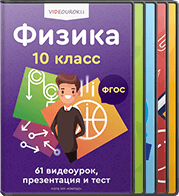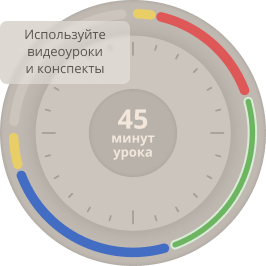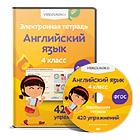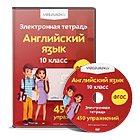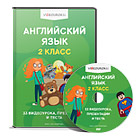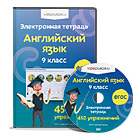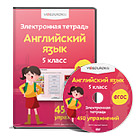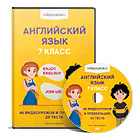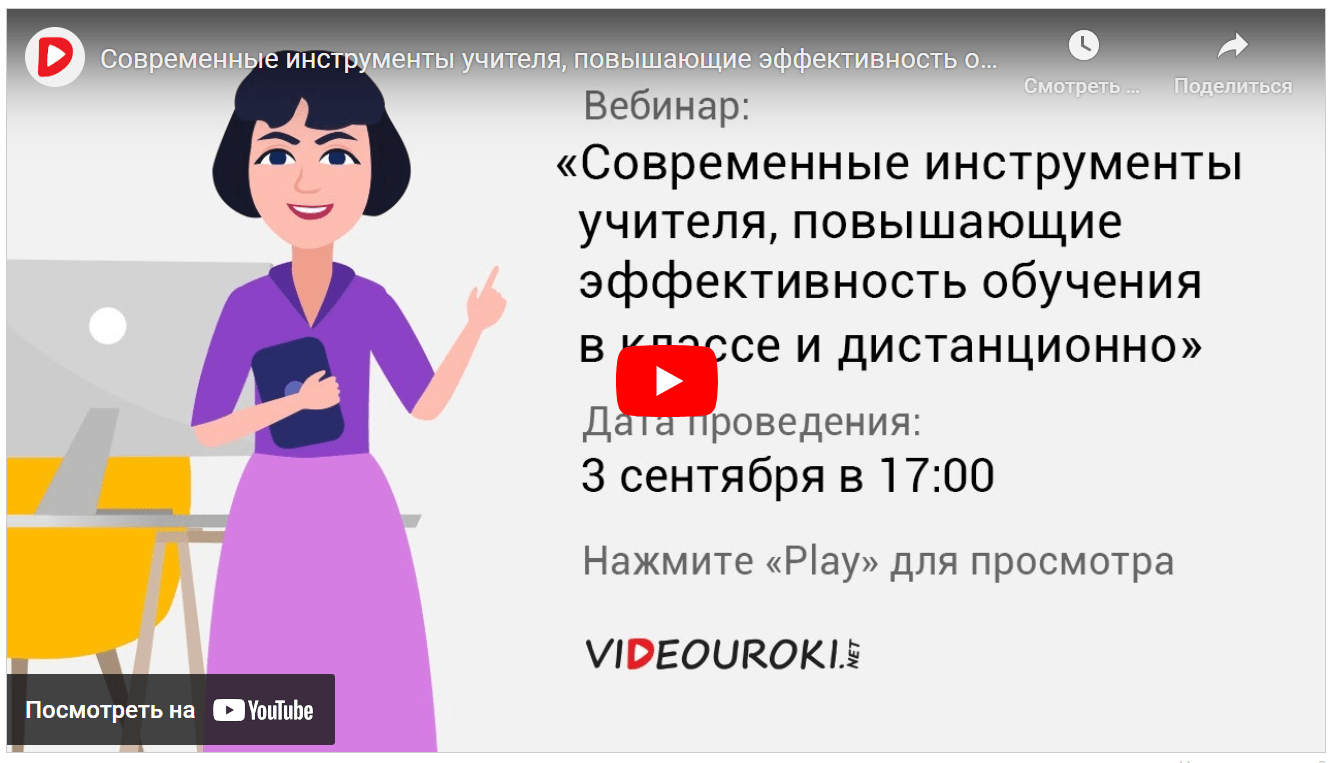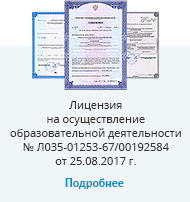Тандем (от англ. tandem - велосипед для двоих или троих) является одним из современных методов обучения иностранному языку, и этот метод приобретает все большую популярность в мире.
Тандем-метод - способ самостоятельного изучения неродного языка двумя партнерами с разными родными языками, работающими в паре.
Во время занятий каждый партнер поочередно выступает то в роли "ученика", изучающего иностранный язык, то в роли "учителя", являющегося экспертом своего родного языка.
Идея изучения иностранных языков в тандеме появилась в Германии в конце 1960-х годов c проектов по германо-французским молодежным обменам. В начале 1970-х гг. была основана рабочая группа по прикладной лингвистике французского языка", которая по заказу DFJG (Deutsch - Franzцsisches Jugendwerk) разработала программу изучения французского языка в парах. Тогда же появился термин "тандем", который обозначал встречи по утрам и в свободное время, на основе заранее подготовленных материалов .
В 1980-е годы тандем получает распространение во многих вузах Европы. Во многих проектах Европейского Союза, начиная с 1994 года, были проведены исследования по этому методу обучения, и он был успешно применен на практике в более чем 30 европейских университетах, школах и других учебных заведениях. В период с 1992 по 1994 гг. Международная e-mail сеть тандем начала создавать дистанционный тандем (в особенности письменное обучение в тандеме, используя е-mail и другие ресурсы интернета), что способствовало созданию новых дидактических материалов для обучающихся и преподавателей иностранных языков.
Сегодня тандем является альтернативной формой изучения иностранного языка, широко используемой во многих европейских и неевропейский странах, в школах, на языковых курсах и даже в университетах. Тандем проводится минимум на 22 языках: на албанском, арабском, баскском, болгарском, датском, немецком, английском, французском, галисийском, греческом, итальянском, японском, каталанском, латышском, польском, португальском, сербохорватском, словенском, испанском, чешском, турецком, венгерском.
Но два самых изучаемых по данному методу языка - немецкий и английский. Это объясняется тем, что тандем-метод появился и сформировался именно в Германии, поэтому наиболее разработан для немецкого языка, а также тем, что целью большинства изучающих иностранный язык является именно английский, как международный язык.
В России тандем до начала XXI века не использовался. Сейчас он применяется в некоторых вузах (например, тандемы в период летних каникул в Государственном Институте русского языка имени А.С. Пушкина в Москве при участии проф. А.Л. Бердичевского). Постепенно наша страна открывает для себя этот метод изучения иностранных языков.
Цели тандема:
1. Повышение уровня языковой компетентности, совершенствование разговорного языка.
2. Развитие межкультурной компетенции. Знакомство с носителями языка из других стран, с культурой страны изучаемого языка, а также получение информации по интересующим областям знаний.
3. Развитие автономии и ответственности за обучение. Участники тандема сами несут ответственность за свое обучение, определяют задачи обучения, решают, когда, где и как они хотят изучать языки, а также как долго.
4. Преодоление страха перед ошибками и языкового барьера. Причинами возникновения языкового барьера является неуверенность в своих знаниях, страх, что собеседник заметит ошибки, нехватка словарного запаса. Общение с носителями языка в неформальной и дружественной атмосфере помогает избавиться от этих страхов.
Особенности тандема:
1. Взаимное обучение в реальной коммуникации с носителем языка.
2. Отсутствие изначальной адаптации материала. Адаптация возможна только в случае непонимания со стороны партнера.
3. Индивидуальный подход. В тандеме учебный план создается исходя из потребностей и заинтересованности партнеров, таким образом, он личностно ориентирован.
4. Независимость партнеров. Партнеры свободны в выборе материала и видов учебной деятельности. Самый распространенный и популярный тип взаимодействия - свободная беседа (партнеры говорят на любую тему). Они также могут выполнять упражнения по грамматике, лексике и другие виды заданий.
5. Оценка не процесса обучения, а результата: живого общения на языке.
Преимущества тандема:
1. Одним из самых важных преимуществ тандема является его гибкость. Он может осуществляться самостоятельно, или быть интегрированным в языковой курс, в течение короткого или продолжительного времени. Он может осуществляться с помощью электронных средств коммуникации, как, например, e-mail, skype, facebook, видеоконференция и тому подобное между группами студентов двух разных языковых школ, расположенных в разных странах, или между двумя лицами.
2. Возможность выбрать удобный график. Выбор того, как будет проходить тандем - остается за участниками, особенно в индивидуальных тандемах.
3. Быстрота и эффективность изучения иностранных языков. Постоянная речевая практика с носителем языка способствует овладению живой разговорной речью в короткие сроки.
Благодаря этим преимуществам метод тандема был принят в академических кругах, так как он позволяет участникам практиковать и применять свои знания в ситуациях реального общения с носителями языка или лингвистически более компетентными собеседниками.
Проект "Тандем В 2".
Рассмотрим применение метода тандема на практике на примере курсов KOMINO (Австрия, Вена). Курсы KOMINO, которые расшифровываются как коммуникация в восточной Европе (Kommunikation in Osteuropa), существуют с 1955 года.
В настоящее время директором курсов является преподаватель Института международных экономических связей Бургенланда (Австрия), магистр Нунэ Умр-Шат. Научное руководство осуществляет доктор педагогических наук, профессор Института международных экономических связей Бургенланда А.Л. Бердичевский -автор многочисленных учебников по немецкому и русскому языкам и руководитель европейских проектов по обучению иностранным языкам.
Подготовка к тандему.
Занятия на курсах строятся следующим образом: в начале учебного дня проводится двухчасовое занятие по одной из тем курса. Занятие проводит преподаватель-носитель языка: для русских участников это преподаватель - англичанин, для английских - русский преподаватель. Темы обсуждаются по рабочим листам. Всего рабочих листов девять. Темы, которые предлагаются для обсуждения:
* первое знакомство: учеба/работа, жилье, свободное время, распорядок дня, свойства личности;
* моя Россия/Англия;
* типичный русский/типичный англичанин;
* как себя вести: рекомендации по поведению иностранцев
России/Англии;
* правила поведения в гостях и приема гостей;
* запретные темы для общения;
* еда, кулинарные рецепты;
* отпуск твоей мечты;
* подведем итоги: что понравилось, какая информация о России/Англии оказалась новой, какие языковые средства запомнились, какие стратегии изучения языка оказались полезными .
На занятии с носителем языка обсуждается лексика и структуры, необходимые для коммуникации. Затем начинается работа в тандеме. Она осуществляется в несколько этапов.
Этапы тандема:
1. Формирование пар. На этом этапе все участники делятся на тандемы, то есть на пары. Способы деления на пары могут быть различными. Например, преподаватели раздают всем карточки, которые дублируются на двух языках. На карточках могут быть нарисованы различные картинки или половинки пословиц. Каждый участник по карточке находит своего партнера на сегодняшний день. Пары не являются постоянными и меняются каждый день.
2. Коммуникация в тандеме. На втором этапе участники тандема вместе приступают к работе по одному рабочему листу. Последовательность языков определяет преподаватель. Время работы на каждом языке около 40 минут, и переход на другой язык своевременно объявляется.
Работа в тандеме основана на принципе взаимопомощи. Англоязычный участник помогает своему партнеру выполнить задание по рабочему листу во время работы на английском языке и таким образом выступает на данном этапе "учителем", через 40 минут роли меняются, и уже русскоязычный участник выступает в роли "учителя" и помогает своему партнеру выполнить задания на русском языке.
Функции преподавателя на этом этапе меняются. Он превращается в наблюдателя: следит, чтобы языки использовались только по очереди, и ни в коем случае не одновременно, создает учебную атмосферу, стимулирует общение и, при необходимости, оказывает помощь.
3. Презентация результатов тандема. На третьем этапе каждый тандем представляет результаты своей работы вначале на одном, потом на другом языке. Время презентации каждой пары составляет примерно 10 минут. Каждый участник сообщает самую интересную и важную информацию, которую он узнал от своего партнера.
Задачи презентации:
1) Информировать участников о результатах работы тандема.
Во время презентации лексика по теме повторяется много раз, что способствует углублению вновь изученной темы.
2) Активизировать устные формы общения.
Диалог культур предполагает не только взаимодействие и проникновение, но и развитие толерантности, а именно, терпимости в отношении к чужим ошибкам, стилю поведения и привычкам.
3) Оценка преподавателем работы участников в тандеме и работы каждого участника отдельно .
На этом этапе роль преподавателя снова меняется. Теперь он уже не концентрирует внимание на языковых ошибках, исправление ошибок не должно прерывать общение. Нередко сами участники исправляют друг друга, что значительно эффективнее.
На всех этапах работы необходимо присутствие преподавателей и русского, и английского языка. При этом, когда преподаватели обращаются к группе, носитель русского языка говорит по-русски, а английского - по-английски.
Перед началом работы в тандеме участники получают рабочие листы.
Каждый рабочий лист состоит из:
а) коммуникативных заданий (Tasks), например:
Познакомься со своим партнером. Тебе нужно узнать о нем как можно больше. Для этого задай ему следующие вопросы и коротко запиши его ответы. Не забудь, что ты должен/должна будешь представить его всей группе и рассказать о нем, его увлечениях и пристрастиях.
б) вопросов по теме (Questionnaire):
Ты учишься/работаешь? Что ты изучаешь/кем ты работаешь? Сколько времени/как долго? Нравиться тебе учеба/работа? …….;
в) комментариев:
В этом мы не очень похожи друг на друга. Мы совсем разные. Это я могу понять, так как… Этого я не могу понять. У нас совершенно
разные/одинаковые вкусы …
в) темы презентации:
Представь своего партнера группе.
Пример рабочего листа на английском языке по теме "Знакомство" .
PRЕSENTATION: Introduce your Partner to the group.
Acquaintance
* Task: get to know your Partner. I want you to know as much as you can. To this end, ask him or her the following questions and note the answers. Don't forget to introduce your Partner or partner to the group and tell your hobbies and preferences.
Questionnaire for the beginning of studies / occupation
1) Do you study? Where are you studying?
2) What do you study?
3) Are you working? Where are you working?
4) What is your profession?
5) Since when do you study / work? 6) Do you like your studies / work?
Live
1) Where do you live?
2) Is it far from university / work?
3) How do you get to university / work?
4) How much does a metro / bus ticket cost?
5) What does gasoline cost?
6)What is the housing or student home rent?
Leisure
1) Do you have a lot of free time?
2) What are you doing in your free time?
3) Do you have other Hobbies?
Daily routine * task: describe your daily routine for one week to your Partner: working hours, Study Times, eating times, leisure time... Trait
Personal Questions
1)What is your best quality?
2) What is your worst feature?
3) What is your gr ancient dream?
4) What are you most afraid of?
5) What music do you like?
6) Please name your favorite authors.
7) What is your favourite dish?
8) What are the properties of mgnner on you? And women?
9) What characteristics are important for a man? What about a woman?
10) If you have the opposite world, what do you want to do first?
* Comments
In this we are (very) ...
There we are ( something) different: (...). I can understand that well, because (...).
I don't understand at all: I (...).
... we have (almost / not) the same taste. I need to remember that. Great, I think that's a good idea.
* Reactions just like me.
Just like us.
Really?
It can't be!
Say blo toh!
So much / so little?
But that's not much.
That's really interesting.
* If you have not understood everything, can you please repeat this?
A little slower, please.
I'm sorry, I still don't understand.
Please write this down! Give an example!
PR presentation: introduce your partner to the group.
Рабочие листы для тандемов составляются на двух языках, при этом лексемы и примеры подбираются с учетом культуры и традиций каждого из языков.
Условия успешности тандема:
1. Нельзя смешивать языки. Даже если использование своего родного языка упростит коммуникацию и понимание между партнерами, необходимо придерживаться этого условия, так как его соблюдение заставляет партнеров практиковать иностранные языки.
2. Языковые партнеры должны уделять каждому языку одинаковое количество времени, которое обычно длится около часа.
3. Большое значение имеет умение партнеров приспособиться друг к другу: партнер - "учитель" должен приспособиться к уровню владения языком партнера - "ученика" и помочь ему выполнить задание на доступном для него уровне. Необходима заинтересованность в продвижении своего партнера и ответственность за него.
4. Наличие мотивации. Каждый из партнеров должен быть активен и максимально вовлечен в процесс коммуникации. В противном случае между участниками будет дисбаланс усилий и возникнет напряжение. Если один из участников не будет следовать совместно принятой договоренности, тандем будет обречен на провал, так как он основан на полной взаимности и сотрудничестве.
Применение метода тандем возможно на любом этапе изучения иностранного языка. На начальном этапе тандем может сыграть ведущую роль в формировании фонетических навыков, в постановке произношения и восприятия иностранного языка на слух. На более продвинутом этапе метод тандем помогает скорректировать возможные ошибки в изучении иностранного языка, сформировать дискурсивную компетенцию - способность построения целостных, связных и логичных высказываний разных функциональных стилей в устной и письменной речи.
На любом этапе изучения иностранного языка тандем-метод является эффективным способом формирования социокультурной компетенции - знания культурных особенностей носителя языка, его привычек и традиций, норм поведения и этикета и умения их понимать и использовать в процессе коммуникации, а также социолингвистической компетенции - способности выбирать и использовать подходящие языковые средства в зависимости от ситуации и цели общения.
В качестве вспомогательного метода при изучении иностранного языка в ВУЗе метод тандем помогает восполнить пробелы в составляющих коммуникативной компетенции. Также происходит процесс применения усвоенных знаний на практике. тандем иностранный язык преимущество.
Tandem (from the English. tandem-bike for two or three) is one of the modern methods of teaching a foreign language, and this method is becoming increasingly popular in the world.
Tandem method is a method of independent learning of a non-native language by two partners with different native languages working in pairs. During class, each partner alternately serves in the role of "student", studying a foreign language, in the role of "teachers" who are expert of their native language.
The idea of learning foreign languages in tandem appeared in Germany in the late 1960s c projects on German-French youth exchanges. In the early 1970s, a working group on the applied linguistics of the French language was founded, which was commissioned by the DFJG (Deutsch - Franzsisches Jugendwerk) to develop a program for the study of French in pairs. At the same time, the term "tandem" appeared, which meant meetings in the morning and in free time, on the basis of pre-prepared materials .
In the 1980s, the tandem is widespread in many universities in Europe. Since 1994, many European Union projects have carried out research on this method of teaching and it has been successfully applied in more than 30 European universities, schools and other educational institutions. In the period from 1992 to 1994. The international e-mail network tandem began to create a remote tandem (especially written training in tandem, using e-mail and other Internet resources), which contributed to the creation of new didactic materials for students and teachers of foreign languages.
Today, tandem is an alternative form of learning a foreign language, widely used in many European and non-European countries, schools, language courses and even universities. Tandem is held in at least 22 languages: Albanian, Arabic, Basque, Bulgarian, Danish, German, English, French, Galician, Greek, Italian, Japanese, Catalan, Latvian, Polish, Portuguese, Serbo-Croatian, Slovenian, Spanish, Czech, Turkish, Hungarian.
But the two most studied languages by this method are German and English. This is due to the fact that the tandem method appeared and was formed in Germany, so the most developed for the German language, as well as the fact that the purpose of most foreign language learners is English as an international language.
In Russia the tandem to the beginning of the XXI century was not used. Now it is used in some universities (for example, in the period of summer vacation in the state Institute of Russian language named after Pushkin in Moscow with the participation of prof. Gradually, our country is discovering this method of learning foreign languages.
The purpose of tandem:
1. Improving the level of language competence, improving the spoken language.
2. Development of intercultural competence. Familiarity with native speakers from other countries, with the culture of the country of the studied language, as well as obtaining information on areas of interest.
3. Development of autonomy and responsibility for learning. The participants of the tandem are responsible for their own learning, define learning tasks, decide when, where and how they want to learn languages, as well as how long.
4. Overcoming the fear of mistakes and language barrier. The causes of the language barrier is uncertainty in their knowledge, fear that the interlocutor will notice errors, lack of vocabulary. Communication with native speakers in an informal and friendly atmosphere helps to get rid of these fears.
Tandem features:
1. Mutual learning in real communication with a native speaker.
2. The lack of adaptation of the original material. Adaptation is possible only in case of misunderstanding on the part of the partner.
3. Individual approach. In tandem, the curriculum is created based on the needs and interests of the partners, so it is personally oriented.
4. The independence of the partners. Partners are free to choose the material and types of educational activities. The most common and popular type of interaction is free conversation (partners speak on any topic). They can also perform grammar, vocabulary, and other tasks.
5. Evaluation of the learning process and the result: live communication in the language.
Advantages of tandem:
1. One of the most important advantages of the tandem is its flexibility. It can be implemented on its own, or integrated into a language course, for a short or long time. It can be carried out by electronic means of communication, such as e-mail, skype, facebook, video conference and the like between groups of students of two different language schools located in different countries, or between two persons.
2. Possibility to choose a convenient schedule. The choice of how the tandem will be held is up to the participants, especially in individual tandems.
3. Speed and efficiency of learning foreign languages. Constant speech practice with a native speaker contributes to the mastery of live spoken language in a short time.
Due to these advantages, the tandem method has been adopted in academic circles, as it allows participants to practice and apply their knowledge in situations of real communication with native speakers or linguistically more competent interlocutors.
Project "Tandem In 2". Consider the application of the tandem method in practice on the example of KOMINO courses (Austria, Vienna). Courses KOMINO, which stands for communication in Eastern Europe (communikation in Osteuropa), exist since 1955 . Currently, the Director of the courses is a teacher Of the Institute of international economic relations of Burgenland (Austria), master Nune UMR-shat. Scientific management is carried out by doctor of pedagogical Sciences, Professor of Burgenland Institute of international economic relations Berdichevsky is the author of numerous textbooks on German and Russian languages and the head of European projects on teaching foreign languages.
Preparation for tandem. Classes on the courses are organized as follows: at the beginning of the school day a two-hour lesson on one of the topics of the course. The lesson is conducted by a teacher-a native speaker: for Russian participants it is a teacher-an Englishman, for English-a Russian teacher. Topics are discussed on worksheets. There are nine worksheets in total. Topics to be discussed:
* first acquaintance: study/ work, accommodation, free time, daily routine, personality traits;
* my Russia/England;
* typical Russian/typical English;
* how to behave: recommendations on the behavior of foreigners
Russia/England;
* rules of conduct for guests and reception;
* forbidden topics for communication;
* food, recipes;
* the vacation of your dreams;
* to sum up: what I liked, what information about Russia/England was new, what language tools were remembered, what strategies of language learning were useful .
The lesson with a native speaker discusses vocabulary and structures necessary for communication. Then begins work in tandem. It is carried out in several stages.
The stages of the tandem:
1. Formation of pairs. At this stage, all participants are divided into tandem, that is, into pairs. Methods of pairing may be different. For example, teachers give out cards that are duplicated in two languages. On the cards can be drawn various pictures or halves of Proverbs. Each participant on the card to find a partner to date. Couples are not constant and change every day.
2. Communication in tandem. At the second stage, the participants of the tandem together begin to work on one worksheet. The sequence of languages is determined by the teacher. The working time in each language is about 40 minutes, and the transition to another language is announced in a timely manner.
Work in tandem is based on the principle of mutual assistance. The English-speaking participant helps his partner to perform the task on the worksheet while working in English and thus acts at this stage as a "teacher", after 40 minutes the roles change, and the Russian-speaking participant acts as a "teacher" and helps his partner to perform tasks in Russian.
The functions of the teacher change at this stage. He turns into an observer: ensures that languages are used only in turn, and in any case not at the same time, creates an educational atmosphere, stimulates communication and, if necessary, provides assistance.
3. Presentation of the results of the tandem. In the third stage, each tandem presents the results of its work first in one, then in another language. The presentation time for each pair is approximately 10 minutes. Each participant provides the most interesting and important information that he learned from his partner.
Presentation objectives:
1) Inform the participants about the results of the tandem.
During the presentation, the vocabulary on the topic is repeated many times, which contributes to the deepening of the newly studied topic.
2) Activate oral forms of communication.
The dialogue of cultures involves not only interaction and penetration, but also the development of tolerance, namely, tolerance towards other people's mistakes, behaviors and habits.
3) evaluation by the teacher of the work of participants in tandem and the work of each participant separately .
At this stage, the role of the teacher changes again. Now he no longer focuses on language errors, error correction should not interrupt communication. Often the participants themselves correct each other, which is much more effective.
At all stages of the work, the presence of teachers of both Russian and English is necessary. At the same time, when teachers turn to the group, a native Russian speaker speaks Russian and English-English.
Before starting work in tandem, participants receive worksheets.
Each worksheet consists of: (Tasks)
a) communication tasks,
for example: Meet your partner. You need to know as much as you can about him. To do this, ask him the following questions and write down his answers briefly. Don't forget that you will have to introduce him to the whole group and tell about him, his Hobbies and preferences.
b) questions on the topic (Questionnaire):
Are you studying/working? What are you studying/what are you doing? How long/how long? Do you like studying/working? …....;
c) comments:
In this we are not very similar to each other. We're different. That I can understand, because... that I can't understand. We have absolutely
different / same tastes …
d) presentation topics:
Introduce your partner to the group.
Example of a worksheet in English on the topic "Introduction" .
PRЕSENTATION: Introduce your Partner to the group.
Acquaintance
* Task: get to know your Partner. I want you to know as much as you can. To this end, ask him or her the following questions and note the answers. Don't forget to introduce your Partner or partner to the group and tell your hobbies and preferences.
Questionnaire for the beginning of studies / occupation
1) Do you study? Where are you studying?
2) What do you study?
3) Are you working? Where are you working?
4) What is your profession?
5) Since when do you study / work? 6) Do you like your studies / work?
Live
1) Where do you live?
2) Is it far from university / work?
3) How do you get to university / work?
4) How much does a metro / bus ticket cost?
5) What does gasoline cost?
6)What is the housing or student home rent?
Leisure
1) Do you have a lot of free time?
2) What are you doing in your free time?
3) Do you have other Hobbies?
Daily routine * task: describe your daily routine for one week to your Partner: working hours, Study Times, eating times, leisure time... Trait
Personal Questions
1)What is your best quality?
2) What is your worst feature?
3) What is your gr ancient dream?
4) What are you most afraid of?
5) What music do you like?
6) please name your favorite authors.
7) What is your favourite dish?
8) What are the properties of mgnner on you? And women?
9) What characteristics are important for a man? What about a woman?
10) If you have the opposite world, what do you want to do first?
* Comments
In this we are (very) ...
There we are ( something) different: (...). I can understand that well, because (...).
I don't understand at all: I (...).
... we have (almost / not) the same taste. I need to remember that. Great, I think that's a good idea.
* Reactions just like me.
Just like us.
Really?
It can't be!
Say blo toh!
So much / so little?
But that's not much.
That's really interesting.
* If you have not understood everything, can you please repeat this?
A little slower, please.
I'm sorry, I still don't understand.
Please write this down! Give an example!
PR presentation: introduce your partner to the group.
The worksheets for the tandems are drawn up in two languages, with the lexemes and examples selected taking into account the culture and traditions of each language.
Conditions for the success of the tandem:
1. You can't mix languages. Even if the use of their native language will simplify communication and understanding between partners, it is necessary to adhere to this condition, as its compliance forces partners to practice foreign languages.
2. Language partners should give each language the same amount of time, which usually lasts about an hour.
3. Of great importance is the ability of partners to adapt to each other: the partner - "teacher" should adapt to the level of language proficiency of the partner - "student" and help him to perform the task at an accessible level for him. It is necessary to be interested in the promotion of your partner and be responsible for it .
4. Availability of motivation. Each of the partners should be active and involved in the communication process as much as possible. Otherwise, there will be an imbalance of effort and tension between the participants. If one of the participants does not follow the jointly agreed agreement, the tandem will be doomed to failure, as it is based on full reciprocity and cooperation.
Application of the tandem method is possible at any stage of learning a foreign language. At the initial stage, the tandem can play a leading role in the formation of phonetic skills, in the formulation of pronunciation and perception of a foreign language by ear. At a more advanced stage, the tandem method helps to correct possible errors in the study of a foreign language, to form a discursive competence - the ability to build holistic, coherent and logical statements of different functional styles in oral and written speech.
At any stage of foreign language learning, the tandem method is an effective method of forming sociocultural competence - knowledge of the cultural peculiarities of the native language, its customs and traditions, norms of behavior and etiquette and the ability to understand and use in the process of communication and sociolinguistic competence - the ability to choose and to use appropriate linguistic means depending on the situation and purpose of communication .
As an auxiliary method in the study of a foreign language in high School tandem method helps to fill the gaps in the components of communicative competence. Also there is a process of application of the acquired knowledge in practice. tandem foreign language advantage.
